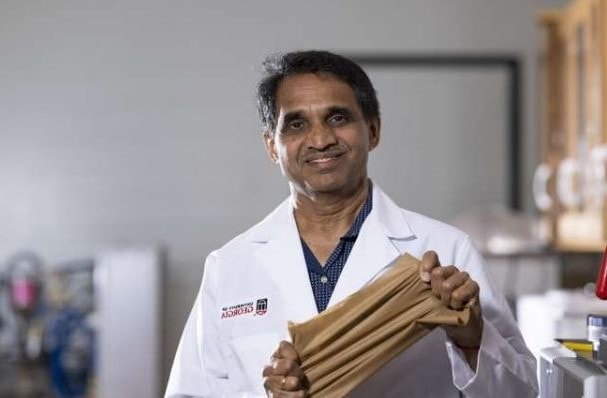While cotton is not as stretchy as nonwovens, it is more water absorbent and softer, making it more comfortable to wear in medical applications such as face masks.
Researchers at the University of Georgia led by Gajanan Bhat, head of the Department of Textiles, Marketing and Interiors at the College of Family and Consumer Services, developed a new stretchable, breathable and absorbent nonwoven composite material that could function as an alternative superior to the materials currently used in the manufacture of masks, bandages and similar medical products.
As explained in a report from the University of Georgia, cotton has been incorporated into the new non-woven material to make it more comfortable against the skin. It also makes the material easier to compost and therefore more sustainable compared to similar products currently on the market.
The importance of cotton
As researchers from the University of Georgia emphasize, cotton is an important crop in the state and a key element of its economy. In this way, the United States Department of Agriculture (USDA), which has been looking for new applications for cotton, was in charge of funding the research.
The nonwoven fabric market is expected to reach a value of $ 77 billion by 2027, according to a report by Acumen Research and Consulting cited by the University. Nonwovens are materials that are currently used in the manufacture of diapers, feminine hygiene products, and air and water filters; They are waterproof, elastic and breathable, and their ability to filter air makes them ideal for medical use.
“Some of these products for biomedical applications, such as band-aids and bandages, require some recovery from stretching and stretching. But since these come into contact with the body, having cotton will be really useful, ”says Gajanan Bhat.
Promising results
While cotton is not as stretchy as nonwovens, it is more water absorbent and softer, making it more comfortable to wear. To test the performance of composites, Bhat’s team combined cotton with two types of nonwovens: spun and melt blown. Spunbond nonwovens contain coarser fiber and are generally more elastic, while meltblown nonwovens contain finer fibers, which allow for better filtration ability, Hsiung notes.
To determine the best combination of an elastic, breathable and absorbent material, the researchers prepared nonwovens in different thicknesses and combined them with one or two sheets of cotton cloth. They ended up trying 13 different combinations.
The tests showed that the composite fabrics had improved water absorption capacity compared to the original non-woven fabrics, while maintaining good breathability. The water absorption of the compounds was three to 10 times higher compared to the non-cotton fabric. The composites also maintained the ability of nonwovens to recover from stretching, allowing them to adapt to spontaneous movements without losing their shape.

